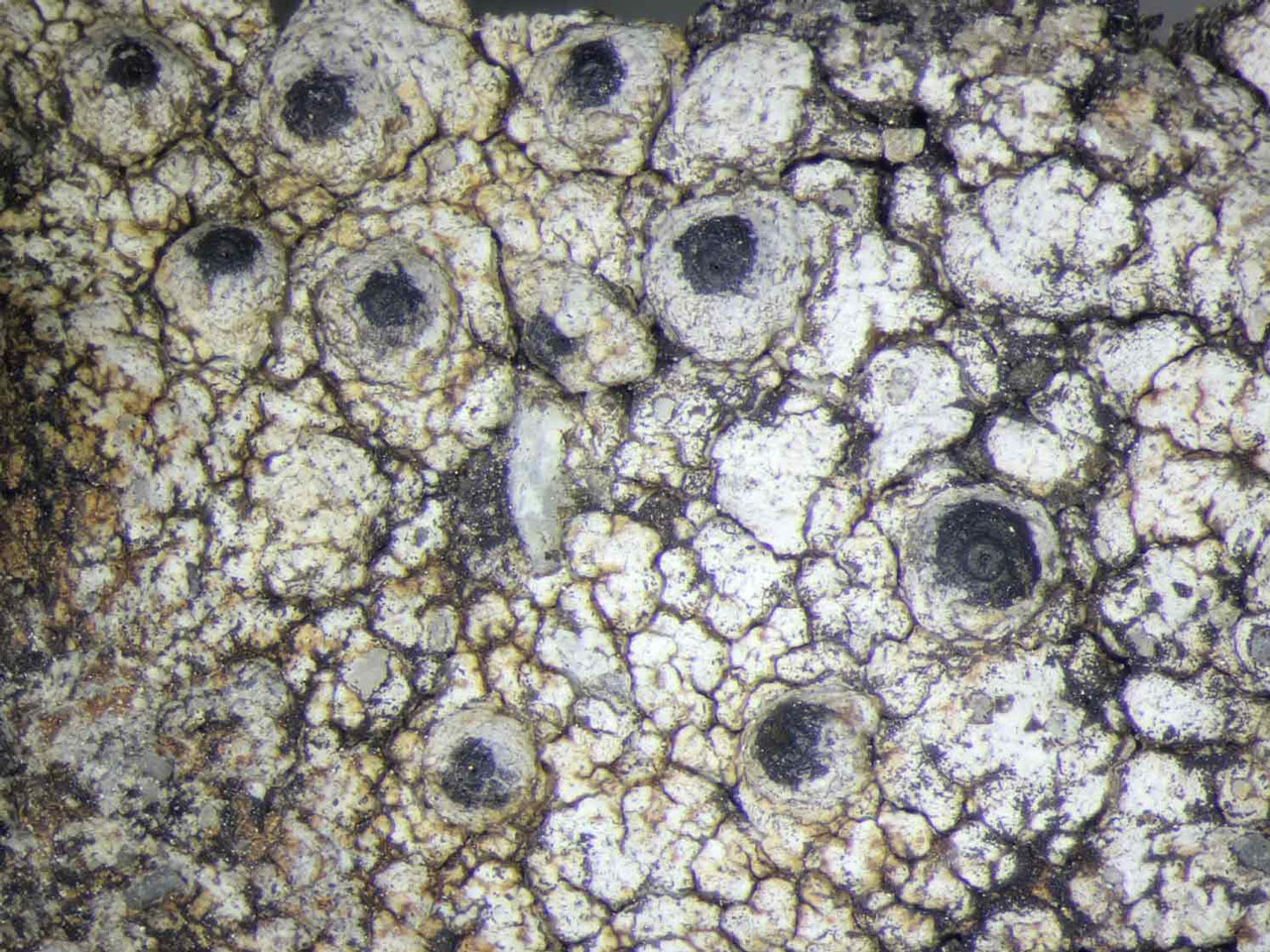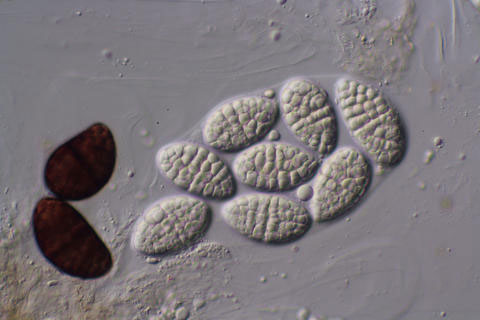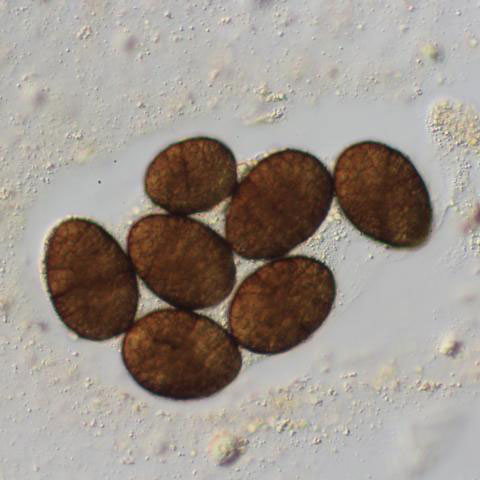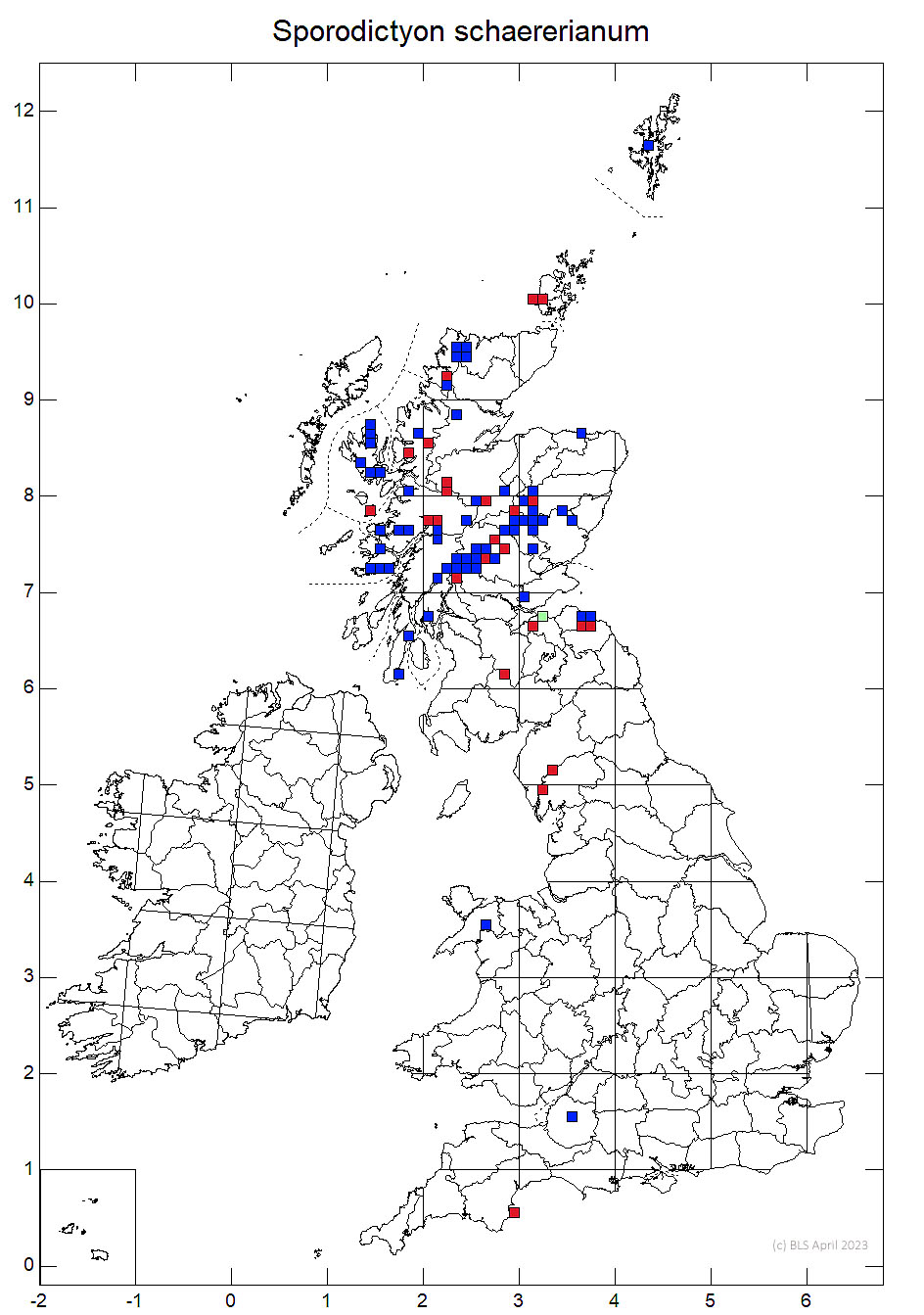Sporodictyon schaererianum
Found on damp calcareous rock on cliffs and below overhangs, mainly upland. Often recognisable in the field by the large perithecia partly covered by irregular patches of thallus. See FGBI - Sporodictyon schaererianum for more pictures
Thallus superficial, well-developed, often of areole-like or lobed convexities 0.1–0.3 mm broad, verrucose or rugose-verrucose, pale grey to pale brown; cephalodia frequent. Perithecia forming projections (0.45–) 0.7–1.2 mm diam., with an irregular and usually incomplete covering of thallus; exposed parts of perithecium ± smooth to strongly roughened. Ascospores muriform, dark brown when mature, the cell outlines often obscured, (50–) 63–73 (–76) × (29–) 33– 41 (–47) μm, length/width ratio (1.4–) 1.6–2 (–2.2).
Often recognisable in the field by the large perithecia partly covered by irregular patches of thallus. This species has been confused with Atla alpina, which differs in the absence of any thalline covering to the perithecium, the slightly larger ascospores, and the absence of cephalodia. Henrica theleodes differs in the strongly convex areoles, smooth perithecia and smaller ascospores. Most old records of H. theleodes are likely to be S. schaererianum.
On damp calcareous rock on cliffs and below overhangs, mainly upland.
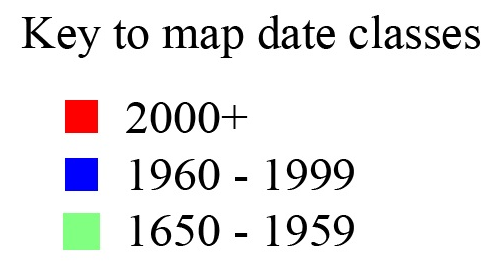
Rare in S.W. & N. England, Wales, Ireland; occasional in Scotland.
Britain: Notable
Orange, A., Cannon, P., Prieto, M., Coppins, B., Sanderson, N. & Simkin, J. (2023). Verrucariales: Verrucariaceae, including the genera Agonimia, Atla, Bagliettoa, Catapyrenium, Dermatocarpon, Endocarpon, Henrica, Heteroplacidium, Hydropunctaria, Involucropyrenium, Merismatium, Nesothele, Normandina, Parabagliettoa, Placidopsis, Placidium, Placopyrenium, Polyblastia, Psoroglaena, Sporodictyon, Staurothele, Thelidium, Trimmatothele, Verrucaria, Verrucula, Verruculopsis and Wahlenbergiella. Revisions of British and Irish Lichens 31: 1-104.
Text by Neil Sanderson based on Orange et al (2023)
